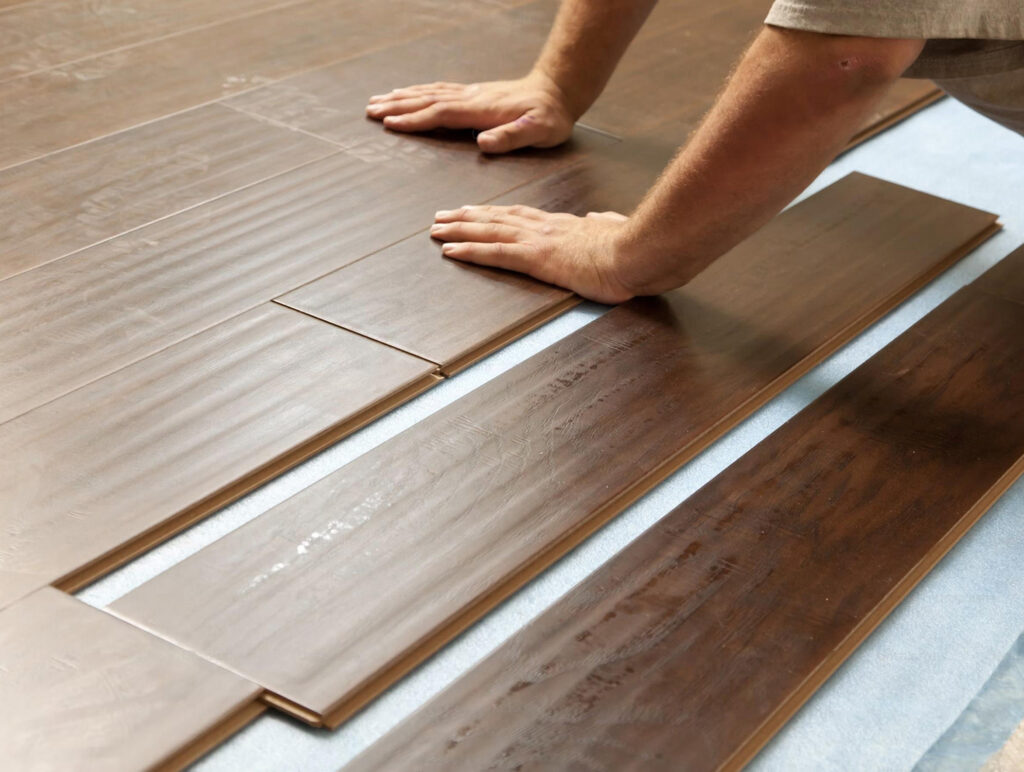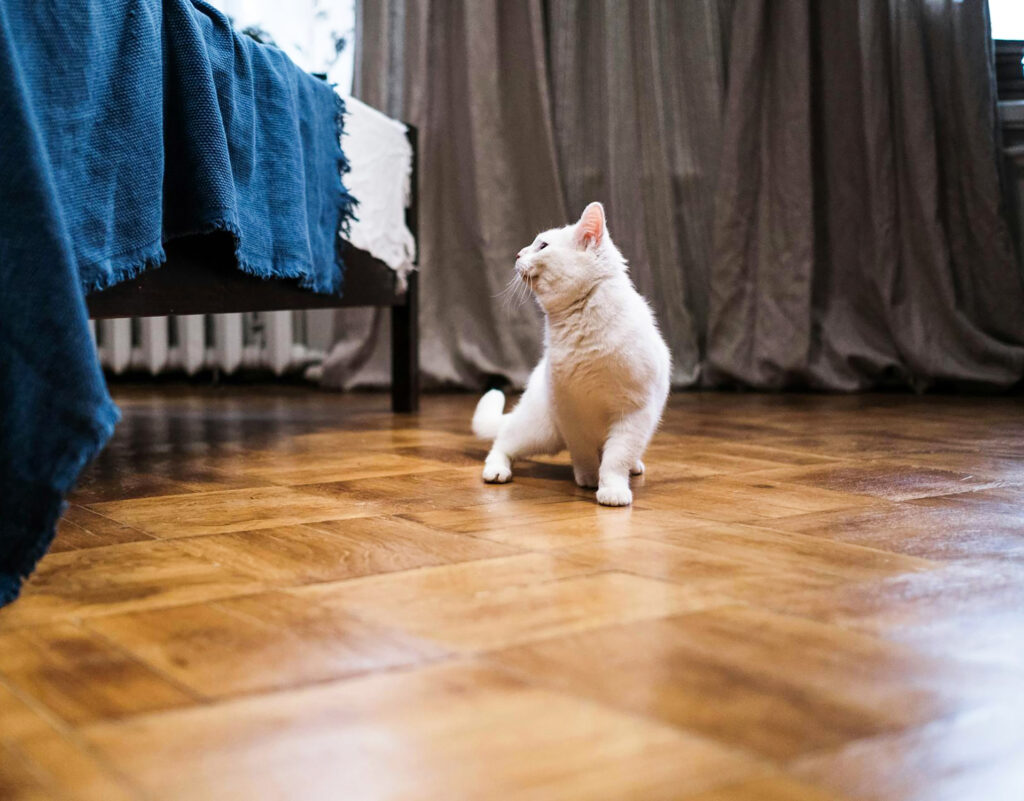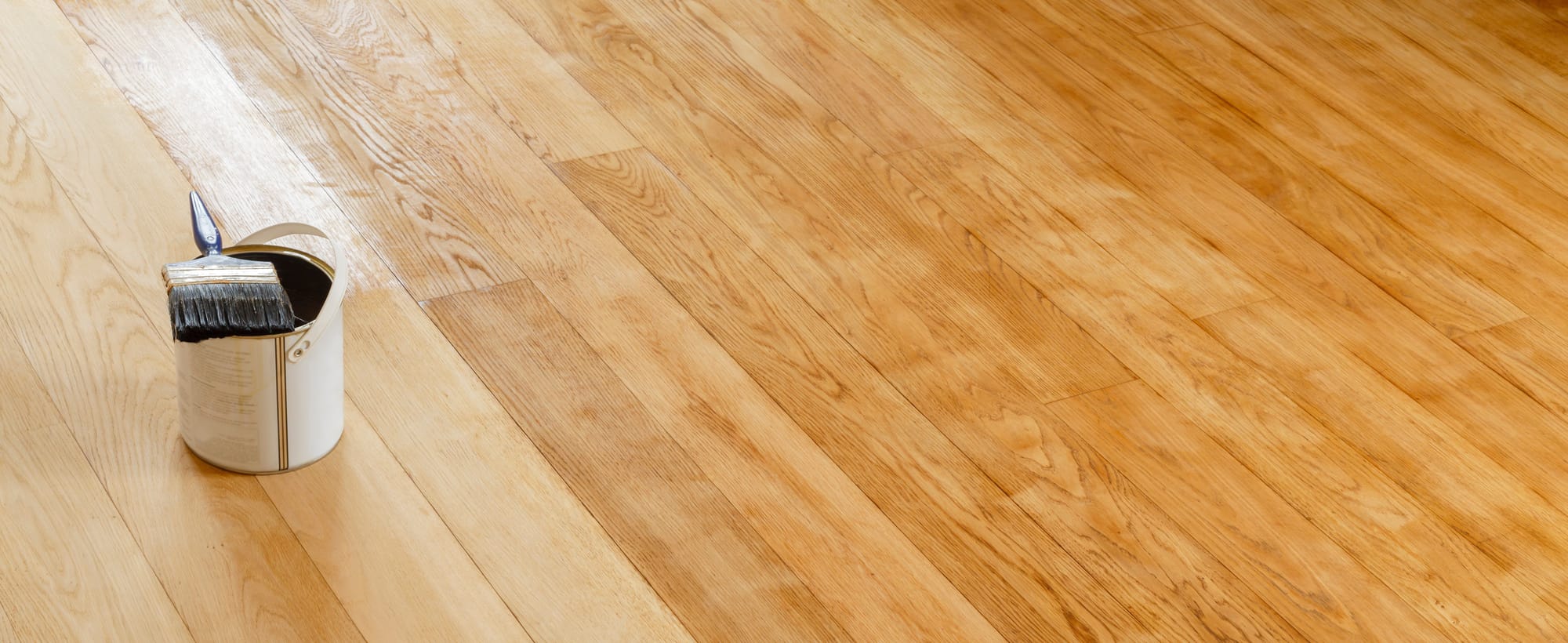Honest materials like solid wood are always a welcome addition to home interiors, but sometimes, engineered alternatives simply make more sense. They’re cheaper, more durable, need less maintenance, and most people can’t tell the two apart.
From a long-term maintenance point of view, solid wood floors are better because they can be sanded down and refinished several times over their lifespan, which can be well over 50 years.
That said, you can polish and sand engineered wood floors too, but only a few times. Because you’re working with a thinner tip-veneer, there’s a limit to how much you can sand away.
These floors have a unique layering composition which calls for finesse and proper technique when sanding. That’s why we recommend hiring professionals for the job. Doing this will ensure that enough, but not too much, is sanded away.
If your floor has scratches, stains, or uneven surfaces from years of use, we can give it the glow-up it needs to look stylish and fresh again. Give us a call on (02) 8425 8999 for a free quote.
In this article, we’ll explore the feasibility of sanding and polishing engineered flooring, provide information on our process, and offer maintenance tips to ensure your floors remain beautiful for years to come.
Understanding Engineered Flooring

Engineered wood flooring looks and feels just like the real deal, owing to a thin layer of real hardwood on the surface. However, underneath this top layer, it features a plywood core.
This has become a popular choice among homeowners because of its durability, versatility, and the natural beauty it brings to any space. Unlike solid hardwood, which is literally one solid piece of wood, engineered hardwood is constructed with multiple layers in the following order:
- A top coat of UV-resistant acrylic
- Hardwood surface layer (this is actually solid wood, just thinner)
- Plywood core with tongue-and-groove edges (perpendicular to upper and lower layers for stability)
- Hardwood veneer backing
Of these, it’s the plywood core that makes these floors cheaper and more stable than their solid wood counterparts. This is a consequence of plywood’s characteristic cross-laminated layers and alternating grain directions.
Unlike solid wood that has a uniform grain direction that makes it susceptible to warping and splitting, plywood is made by glueing together multiple thin layers (veneers) of wood, with each layer’s grain running perpendicular to the adjacent layers.
The criss-cross construction forces the wood grains to expand and contract 90° to one another, ensuring an even distribution of moisture and pressure. This minimises the risk of warping and swelling with changes in humidity levels, making for a solid substrate or base layer.
Engineered floors give you the flexibility to choose your favourite wooden species without worrying about the cost. Because of all these advantages, many homeowners choose this over solid floors for their houses in Sydney.
However, one common question that arises is whether engineered flooring can be sanded and polished to restore its original lustre.
While the answer isn’t straightforward and depends on several factors. Understanding the process and limitations can help you make informed decisions about caring for your engineered floors.
Can You Polish Engineered Hardwood Floors?

Yes, polishing and sanding engineered hardwood floors is possible but there’s a limit to how many times it can be done. It depends on the thickness of the veneer present in the topmost layer.
Engineered floors with a thicker veneer can be sanded and refinished a few times, similar to solid hardwood floors. However, those with a thinner veneer might only withstand one sanding session, or none at all.
The thickness of most commercially available engineered hardwood flooring typically ranges from 3 mm to 6 mm. Any more than 3 mm and you’re good to sand it a few times. 5 mm is ideal.
However, if the hardwood wear layer is less than 3 mm, then floor sanding and polishing treatments are not recommended. For instance, if your engineered flooring has a thickness of about 2 mm, then floor sanding is risky.
Polishing your engineered floors is the next step—it’s a simpler process and can help restore their shine and lustre.
Are your floors stained, discoloured, or extra dirty? If so, before you have your floors polished, they should be professionally sanded. Abacus Flooring has professional grade floor sanders and equipment to ensure quality results during this process. We only use top-tier, application-specific products to prevent any damage.
Our Process

Since the top wear layer is solid wood, engineered floors are also susceptible to damage from daily wear and tear.
Sanding and removing the worn-out top layer will remove any scratches, dents, gouges, and stains. However, it’s important to proceed with caution—a rigorous or menial sanding could permanently damage the floor.
Our floor sanding and polishing professionals pay special attention when working on engineered hardwood floors. They use the right techniques and equipment with the utmost care. If a board is severely damaged beyond repair, they will promptly replace it.
Once the sanding is done, we apply a protective finish like polyurethane, wax, or oil to ensure durability, appearance, and protection.

A minimum of two coats of polish are used, and they are left for two days to harden.
You can usually walk on your floors again in 2-4 days and your furniture can be back in place after 24 hours, but you will need to be extremely careful with this.
Rugs can be returned to the floors after 3 days. However, we do not recommend any rugs that are used for heavy foot traffic or wiping off the feet for 7 days.
If you’re tired of looking at the same wood tone and want a subtle variation in colour, we have many polishes and stains to choose from. Some of these include:
- Modified oils
- Solvent or water-based polyurethane
- Timber stain
Our finishes are very durable, are water-resistant and require minimum maintenance. That way you can spend more time enjoying your floors and less time cleaning them.
Your Floors Deserve the Best

Flooring loses its sheen over time because of reasons such as frequent moving of furniture, over utilisation of the floor space, sunlight, pets, kids and general high traffic, making routine maintenance and polishing a necessity.
We can help with all your sanding, polishing, and maintenance needs.
If you need top-tier floor polishing services in Sydney, contact our team at Abacus Flooring and let us handle the rest. Please note that we service all areas of Sydney, especially:
- Northern Beaches
- Northern Shore
- Eastern Sydney
- Inner West Sydney
- Hills District
- Blacktown and Penrith
- St. George and Sutherland Shire
- South Western Sydney
Contact us for more information today.


